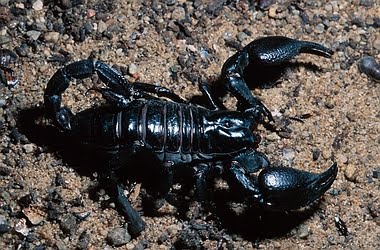
Scorpions are nocturnal or diurnal, predatory animals that feed on a variety of insects, spiders, centipedes, and other scorpions. The larger scorpions occasionally feed on vertebrates, such as small lizards, snakes, and mice. Prey is detected primarily by sensing vibrations with the pectine organs. The pedipalps have an array of fine sensory hairs that sense air-borne vibrations; the tips of the legs have small organs that detect vibrations in the ground. Most scorpions are ambush predators who detect prey when it comes within reach.







